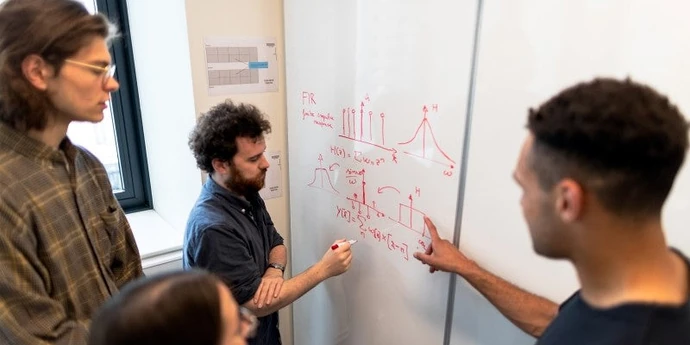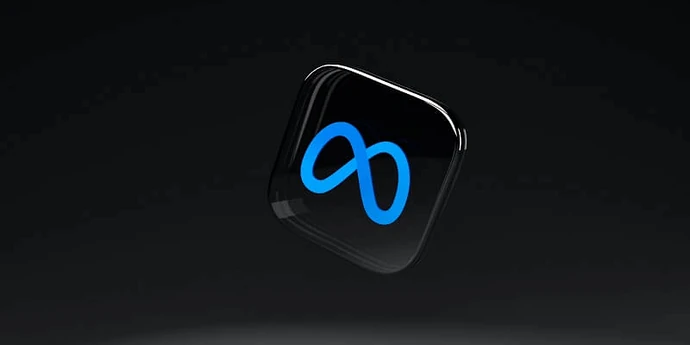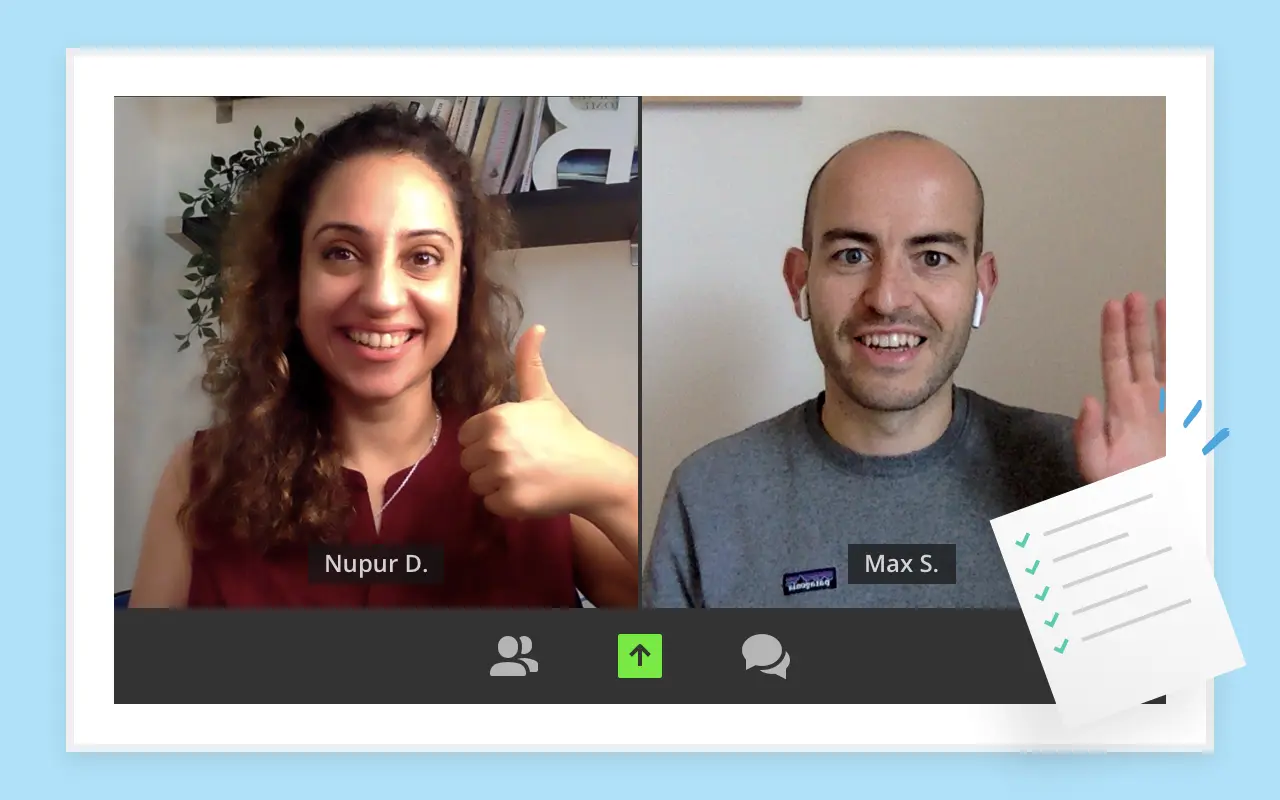We’ve helped thousands of candidates succeed in interviews at FAANG+ companies—and one thing is clear: preparation is everything.
Landing an offer at Google, Meta, Amazon, Netflix, or any other Big Tech company takes more than technical expertise. You need a thorough interview prep strategy if you want to stand out.
That’s why we created this guide. Below, we break down the seven critical steps to prepare effectively for a FAANG interview. Follow them, use the resources we share, and give yourself the best shot at success.
- Own the process
- Prepare for FAANG coding interviews
- Prepare for FAANG system design interviews
- Prepare for FAANG behavioral interviews
- Improve your interviewing skills
- Research the companies
- Practice with mock interviews
Use this guide as a launchpad for all your FAANG interview prep. When you need to go deeper into a topic, we’ve got you covered with our deep dive resources.
Let’s go!
Click here to practice 1-on-1 with a FAANG interview expert
1. Own the process↑
Before we give an overview of the process, let’s be clear about what we mean when we talk about FAANG.
FAANG stands for the top 5 Big Tech companies: Facebook (now Meta), Apple, Amazon, Netflix, and Google. We sometimes use FAANG+ as a catch-all term to include companies like NVIDIA, Uber, and OpenAI, which have since become just as prestigious as the Big 5.
In this guide, you’ll find that we focus a lot more on Meta, Google, and Amazon. They remain the top 3 in terms of hiring and are the companies where most of the candidates we’ve worked with land offers.
1.1 What are FAANG interviews like?
Interviews at FAANG are known to be quite rigorous, involving multiple steps with a mix of 1-on-1 and panel interviews, depending on the role you’re applying for.
An entire interview process, from recruiter screen to final interview loop, can last from 2 weeks to several months.
Here’s a look at the steps of a typical FAANG interview process.

Some companies may skip online assessments or recruiter screens and go straight to initial phone screens.
As you might expect, the interview loop is the most challenging one to get through. One final interview loop can have at least four to five rounds, testing you on both the hard and soft skills you’ll need for the role.
If you’re applying for the same role across multiple FAANG+ companies, you’ll notice that they give similar interview questions. But the focus for each company can be slightly different.
For instance, if you’re applying for an Amazon SDE role, you’ll need to prepare just as heavily for their Leadership Principles questions as you would for the technical questions.
For a Meta software engineering role, speed during coding rounds is a bigger priority than it is for the same role at Google.
If you’re interviewing for a software engineer role at NVIDIA or OpenAI, you can expect a similar number of coding rounds as they have at the Big 3, along with questions related to AI/ML.
What candidates need to understand about FAANG interviews is that during your role-related interview rounds, interviewers are not just assessing your technical skills; they’re also evaluating your communication and collaboration skills. We’ll go deeper into this as we discuss the types of interviews you might face.
Refer to our specific guides for each role and FAANG+ company to get the exact breakdown of what you can expect from the interview process.
- Meta software engineer interview guide
- Meta engineering manager interview guide
- Meta product manager interview guide
- Meta technical program manager interview guide
- Google software engineer interview guide
- Google engineering manager interview guide
- Google product manager interview guide
- Google technical program manager interview guide
- Amazon software development engineer interview guide
- Amazon software development manager interview guide
- Amazon product manager interview guide
- Amazon technical program manager interview guide
- Apple product manager interview guide
- Netflix product manager interview guide
- Netflix engineering manager interview guide
- Microsoft software engineer interview guide
- Microsoft engineering manager interview guide
- Microsoft product manager interview guide
- NVIDIA software engineer interview guide
Wondering if you're FAANG interview-ready? Check out our article, How do I know if I'm ready for a FAANG interview? for expert insights and a 2-step assessment method.
1.2 How many interviews will I face?
The number of interviews you’ll face depends on the role and company.
If you’re applying for an engineering role at FAANG, you can expect to face multiple rounds of coding, one or two system design interviews, and a behavioral interview round.
For engineering manager roles, you can expect fewer coding rounds, if any. Instead, you’ll have several system design interview rounds, and even more behavioral interviews focused on your leadership skills and experience.
Let’s take a look at how you can prepare for these interviews in the next sections.
2. Prepare for FAANG coding interviews↑
If you’re applying for an engineering role at a FAANG company as an individual contributor, you’ll definitely face at least one coding interview.
For leadership roles, it depends on the company.
- Google: at least one coding or code review round
- Meta: at least one coding or code review round
- Amazon: may skip the coding round and focus more on system design.
- Netflix: may skip coding, but depends on the domain of the team you’re applying to
- Apple: at least one coding round
One coding round tends to last around 45 minutes. It depends on the company how many coding problems you’ll be given within a single round.
You'll be asked to code in a specific app that the company uses for coding interviews. If it's an in-person interview, you'll be given a laptop to do this on. It's now quite rare for candidates to have to write code on a whiteboard.
Solving problems during a coding interview is very different from solving the same ones on Leetcode. You’ll have to talk through your solution and treat the entire problem-solving process as a collaboration between you and your interviewers.
You may also get “trivia” type questions that test your knowledge about an area of coding. These are most common in the early rounds, as the recruiter or hiring manager wants to get a sense of your level of expertise.
At the beginning or end of your coding round, you may face behavioral or cultural fit questions as well.
Now that you have an idea about FAANG coding interviews, let’s look at some steps you can use to prepare.
2.1 Refresh on data structures and algorithms↑
2.1.1 Data structures
Here, we take a look at some of the most important data structures typically used in coding interviews.
For each one, we've included a link to a separate resource that dives more deeply into the topic. You might want to skim this list, skipping the topics on which you're already clear and selecting the ones you need a refresher on.
#Arrays
An array is a list-like data structure that contains a collection of values, each associated with a specific index, usually with a fixed overall size.
Arrays are one of the most fundamental data structures in programming and computer science, and many more complex data structures are built using arrays.
The array itself is not always as simple as it might seem, and it forms the basis for many tricky interview questions.
Learn more about array interview questions.
#Strings
A string is an ordered sequence, or string, of characters. It is usually considered a data type and is often included as part of language primitives.
In most languages, strings are implemented using an array of bytes. The bytes are encoded using some character encoding.
Earlier systems used ASCII encoding, with Unicode encoding used in later systems.
Learn more about string interview questions.
#Linked lists
A linked list is a data structure used to store a collection of data elements. In this way, it is similar to an array.
However, unlike an array, the data elements in a linked list do not need to be stored contiguously in memory. Rather, each node in a linked list has a pointer or reference to the memory location of the next node in the list.
This means that linked lists do not have a fixed size like arrays, and can easily grow and shrink as elements are added or removed.
Learn more about linked list interview questions.
#Stacks and queues
Stacks and queues are similar and complementary in many ways. Both are sequenced collections of elements that are generally accessed one element at a time and are implemented using similar data structures.
Stacks are Last In First Out (LIFO) constructs. Queues are the opposite, being First In First Out (FIFO) constructs. These characteristics are what give these structures their name.
A stack is analogous to a stack of physical objects, for example, a stack of plates or chairs. The last plate or chair added to the stack is usually the first one removed when an item is needed. Similarly, for a queue, the first person to enter a queue is usually the first person served.
Learn more about stacks and queues interview questions.
#Graphs
A graph is an abstract data structure represented by vertices connected by edges. Vertices are also known as nodes. Vertices sharing an edge are known as adjacent.
In directed graphs, sometimes called digraphs, the edges between nodes have a direction attribute to show which way a relationship between two nodes goes. Non-directed graph edges have no direction, meaning the relationship goes in both directions.
Learn more about graph interview questions.
#Trees
A tree is an abstract hierarchical data structure. It is represented by a group of linked nodes, with a single root node. Each node can have zero or multiple children. A leaf is a node with no children.
Learn more about tree interview questions.
#Maps
A map is a data structure that allows us to access a value by key. This is in contrast to an array that allows us to access a value by index.
A common kind of map is a hash map (also called a hash table), which stores keys along with associated values (for example, a telephone directory, which associates phone numbers with names).
Learn more about map interview questions.
#Heaps
A heap is a tree-based data structure that implements a priority queue. A priority queue functions much like a regular stack or queue, except that each element has a priority. It is this priority that determines which element is returned when dequeuing from the priority queue, rather than the order in which the element was added.
This is useful for applications like a hospital queue, where we want to serve the patient with the highest priority first.
Learn more about heap interview questions.
2.1.2 Algorithms
Below, we've listed the most relevant algorithms for coding interview questions. Again, feel free to skip the topics you're already confident in, and just click the link on the ones you want to study in more detail.
#Depth-first search
We can categorize all data structures into two categories: those with a simple option for visiting each item, and those with multiple, complex options for visiting each item.
Data structures like arrays, lists, stacks, and queues fall in the first category. We can easily visit each node in an array by traversing over the array indices; following each link for a list; popping from a stack; and dequeuing from a queue.
However, for a tree or graph data structure, it is not so simple. A depth-first search (or traversal) is an option for visiting all the nodes in a tree or graph. In a depth-first search (DFS), we visit the child nodes first before siblings.
Learn more about depth-first search interview questions.
#Breadth-first search
Breadth-first search (BFS) is one traversal method for trees and graphs in which all vertices on one layer are visited before visiting their children on the next layer – i.e. every node on layer i is visited before the nodes on layer i+1.
Learn more about breadth-first search interview questions.
#Binary search
Binary search is one of the fastest search algorithms because it halves the search space with each iteration.
Binary search requires an ordered set that also has constant access times. This means that, of all the basic data structures, only sorted arrays are suitable for binary search.
Learn more about binary search interview questions.
#Sorting
Many algorithms require, or perform better on, a sorted dataset. Take searching as an example: to search an unsorted dataset of 1,000 items means looking at all 1,000 items in the worst case.
In contrast, using binary search on a sorted dataset of 1,000 items means looking at 10 items in the worst case. For a bigger dataset of 1,000,000 items, searching it as unsorted is looking at 1,000,000 items at worst, but searching it as sorted is looking at 20 items at worst.
Being able to sort data effectively can therefore yield returns later in an algorithm.
Learn more about sorting interview questions.
#Dynamic programming
Dynamic programming is an algorithmic paradigm to create optimal solutions for complex problems by breaking them down into simpler sub-problems that can be solved recursively.
Learn more about dynamic programming interview questions.
#Greedy algorithm
A greedy algorithm is an algorithmic paradigm that finds the optimal solution to a problem by breaking the problem down into smaller (local) parts and finding the best solution for each of these parts.
Learn more about greedy algorithm interview questions.
#Backtracking
Backtracking is a form of brute-force problem solving, but with the ability to discard potential solutions early, before they are fully explored. It is an algorithmic paradigm for incrementally finding solutions to problems.
As soon as a candidate route will not result in the final complete solution being valid, the algorithm will “backtrack.” Therefore, backtracking can be applied when it is possible to test the validity of partial solutions.
Learn more about backtracking interview questions.
#Divide and conquer
Divide and conquer (DAC) is an algorithmic paradigm used to solve problems by continually dividing the problem into smaller parts until a part is easy enough to solve (conquer) on its own.
The solutions to the solved parts are then combined to give the solution for the original problem.
For optimization problems, being able to build an optimal solution based on the optimal solution of smaller parts is known as an optimal substructure.
Learn more about divide and conquer interview questions
2.1.3 Big O notation
To impress in a coding interview at a top tech company, you’ll need to show a good understanding of Big-O.
Big-O is a method of analysis used to measure an algorithm’s performance in terms of certain properties. When we design algorithms, we need to pick the algorithm that best meets our time and space constraints. Big-O provides us with a simple expression we can use to analyze and compare algorithms.
Learn more about Big O interview questions.
2.2 Learn an answer method↑
The problems you can expect to face in your coding interview are highly ambiguous and can usually be solved in many different ways.
To guide and structure your thinking, you’ll therefore want to use a consistent answer framework that you can apply to each question.
One of our favorite approaches is summarized in the following video from Amazon:
Five-step approach to coding interview problems
Step 1: Clarify
- Ask clarification questions to remove ambiguity about the problem
- Explore the edges of the problem
Step 2: Plan
- Discuss potential approaches you could take
- Pick an approach and lay out the high-level steps
Step 3: Implement
- Write clean code, not pseudocode
- Comment on your code as you go
Step 4: Test
- Start by testing with a simple example
- Try breaking your code with edge and corner cases
Step 5: Optimize
- Calculate time complexity
- Discuss how you can optimize your solution
Other FAANG companies have their own prescribed coding answer frameworks, as you’ll see in Google’s mock coding interview video and this software engineer interview Q&A by Meta. We recommend checking each one out and deciding which framework works best for you. It doesn’t matter which one you end up using, as they’re all valid.
Using any of these answer frameworks will give you a structure to show your problem-solving skills and, of course, your coding knowledge.
#Expert tip
"Don't ignore the psychological aspect and the role that nerves can play. Often, people have done the prep and practised loads of problems, but then they bomb the interview because of nerves.
Doing mock interviews can reduce this, but I think it's important to go into the interview ready with some basic techniques to calm the mind. It can be as simple as taking deep breaths, focusing on incoming and outgoing breathing for a few minutes, or getting some fresh air before the interview. Plus, don't underestimate a good night's sleep!"
Taru (Meta software engineer and interview coach)
2.3 Practice solving example questions↑
Once you’ve refreshed your knowledge of data structures and algorithms, you’ll want to start practicing. Candidates who train with us usually practice hundreds of questions before their interview.
Below we list the most common coding questions asked at the Big 3 companies, as reported by former candidates on Glassdoor and other online forums.
2.3.1 Google coding interview questions
- Given a binary tree, find the maximum path sum. The path may start and end at any node in the tree. (Solution)
- Given a robot cleaner in a room modeled as a grid. Each cell in the grid can be empty or blocked. The robot cleaner with 4 given APIs can move forward, turn left or turn right. Each turn it made is 90 degrees. When it tries to move into a blocked cell, its bumper sensor detects the obstacle and it stays on the current cell. Design an algorithm to clean the entire room using only the 4 given APIs shown below. (Solution)
- Given an encoded string, return its decoded string. (Solution)
- Implement a SnapshotArray that supports pre-defined interfaces (note: see link for more details). (Solution)
- In a row of dominoes,
A[i]andB[i]represent the top and bottom halves of thei-th domino. (A domino is a tile with two numbers from 1 to 6 - one on each half of the tile.) We may rotate thei-th domino, so thatA[i]andB[i]swap values. Return the minimum number of rotations so that all the values inAare the same, or all the values inBare the same. If it cannot be done, return-1. (Solution) - Given a
matrixand atarget, return the number of non-empty submatrices that sum to target. (Solution) - Given a rows x cols binary matrix filled with 0's and 1's, find the largest rectangle containing only 1's and return its area. (Solution)
- A strobogrammatic number is a number that looks the same when rotated 180 degrees (looked at upside down). Find all strobogrammatic numbers that are of length = n. (Solution)
- A group of two or more people wants to meet and minimize the total travel distance. You are given a 2D grid of values 0 or 1, where each 1 marks the home of someone in the group. The distance is calculated using Manhattan Distance, where distance(p1, p2) =
|p2.x - p1.x| + |p2.y - p1.y|. (Solution)
Click here to learn more about Google coding interviews.
2.3.2 Meta coding questions
- Given an array
numsof n integers where n > 1, return an arrayoutputsuch thatoutput[i]is equal to the product of all the elements ofnumsexceptnums[i]. (Solution) - Given a string S and a string T, find the minimum window in S which will contain all the characters in T in complexity O(n). (Solution)
- Given a non-empty string
s, you may delete at most one character. Judge whether you can make it a palindrome. (Solution) - Given the
rootnode of a binary search tree, return the sum of values of all nodes with value betweenLandR(inclusive). (Solution) - Given a Binary Tree, convert it to a Circular Doubly Linked List (In-Place). (Solution)
- Serialize and deserialize a binary tree (Solution)
- Given a binary tree, find the maximum path sum. (Solution)
- Given a list of non-negative numbers and a target integer k, write a function to check if the array has a continuous subarray of size at least 2 that sums up to the multiple of k, that is, sums up to n*k where n is also an integer. (Solution)
- You are given two non-empty linked lists representing two non-negative integers. The digits are stored in reverse order and each of their nodes contains a single digit. Add the two numbers and return it as a linked list. (Solution)
- We have a list of
pointson the plane. Find theKclosest points to the origin(0, 0). (Solution) - A linked list is given such that each node contains an additional random pointer that could point to any node in the list or null. Return a deep copy of the list. (Solution)
Click here to learn more about Meta coding interviews.
2.3.3 Amazon coding questions
- Given preorder and inorder traversal of a tree, construct the binary tree. (Solution)
- Design an algorithm to serialize and deserialize a binary tree. There is no restriction on how your serialization/deserialization algorithm should work. You just need to ensure that a binary tree can be serialized to a string and this string can be deserialized to the original tree structure. (Solution)
- Given a list of airline tickets represented by pairs of departure and arrival airports
[from, to], reconstruct the itinerary in order. All of the tickets belong to a man who departs fromJFK. Thus, the itinerary must begin withJFK. (Solution) - Given a string s, find the longest palindromic substring in s. You may assume that the maximum length of s is 1000. (Solution)
- Say you have an array for which the ith element is the price of a given stock on day i. If you were only permitted to complete at most one transaction (i.e., buy one and sell one share of the stock), design an algorithm to find the maximum profit. Note that you cannot sell a stock before you buy one. (Solution)
- Given an array of integers nums and an integer target, return indices of the two numbers such that they add up to target. You may assume that each input would have exactly one solution, and you may not use the same element twice. (Solution)
- Merge two sorted linked lists and return it as a new sorted list. The new list should be made by splicing together the nodes of the first two lists. (Solution)
- Design a stack that supports push, pop, top, and retrieving the minimum element in constant time. (Solution)
Click here to learn more about Amazon coding interviews.
2.4 Which language is best to use for FAANG coding interviews?
Big tech companies all say that you should code in whichever language you feel most comfortable using during coding interviews.
That’s because more than anything, they want to see your clarity of thought and your problem-solving abilities. It doesn’t matter what coding language you do this in, as long as it’s a language that’s known to a wide audience.
However, if you’re comfortable writing code in various languages, you’ll have to weigh various factors when you’re choosing which one to use.
Java, Python, and C++ all have the advantage of being widely used at FAANG companies. This makes them a common choice for candidates.
Python has the advantage of being very efficient to write, compared to Java and C++, and many candidates say this saves time in interviews.
However, Java has the advantage of being a “real” (compiled) language rather than an interpreted language, and some people say this may impress your interviewer.
Whichever one you choose to use, just make sure you’re comfortable in it and have been using it for a good few months before the interview.
You can check out our comprehensive list of 47 coding interview examples for practice questions, categorized by coding language.
3. Prepare for FAANG system design questions↑
System design interviews are typically 45-60 minutes long, beginning with a very broad prompt, like "Design Twitter.”
You'll be expected to generate a high-level design, showing the different system components that will be required, how they're connected, and any trade-offs in the approach you've taken.
The frequency of these interviews will depend on what role you’re applying for. As a rule of thumb, the more senior the position, the more system design interviews you’ll have.
In addition to software engineer and engineering manager interviews, system design questions are also used for TPM interviews, and potentially for other technical roles as well.
3.1 Refresh on system design fundamentals↑
To be able to speak intelligently about system design, you’ll need to acquire a knowledge base of related concepts.
This doesn’t mean you need to know every detail related to sharding, load balancing, queues, etc. However, you will need to understand the high-level function of typical system components.
You'll also want to know how these components relate to each other, and any relevant industry standards or major trade-offs.
To help you get the foundational knowledge you need, we've put together a series of 9 system design concept guides.
Here's a full list:
- Network protocols and proxies make it possible for any networked computers to talk to each other, no matter where they are or what hardware or software they’re running.
- Databases are integral components of the world’s biggest technology systems.
- Latency, throughput, and availability are three common metrics for measuring system performance.
- Load balancing is the process of distributing tasks over a set of computing nodes to improve the performance and reliability of the system.
- Leader election algorithms describe how a cluster of nodes without a leader can communicate with each other to choose exactly one of themselves to become the leader.
- Caching is a technique that stores copies of frequently used application data in a layer of smaller, faster memory in order to compute costs and to improve data retrieval times and throughput.
- Sharding is the horizontal scaling of a database system, which is accomplished by breaking the database up into smaller “shards,” or separate database servers that all contain a subset of the overall dataset.
- Polling, SSE, and WebSockets are techniques for streaming high volumes of data to or from a server.
- Queues and pub-sub are mechanisms that allow a system to process messages asynchronously, preventing bottlenecks and helping the system to operate more efficiently.
To build on the concepts outlined above, and more, the ByteByteGo YouTube channel has lots of videos worth checking out.
3.2 Learn an answer method↑
With so much to talk about, you’ll also need some kind of method to help you structure your thought process.
There are a variety of ways to solve system design interviews, but at the end of the day, you need a method that will consistently:
- Show your interviewer that you have the knowledge they need
- Break the problem down into manageable steps
Here’s one of our favorite approaches, summarized in the following video from Amazon:
The approach shown in the video above can be boiled down into 3 main steps:
- Ask clarifying questions: make sure you clearly understand the goals and requirements of the system.
- Design high-level, then drill down: quickly clarify the requirements and draft a high-level design for the system within the first 20 minutes. Then spend most of the remaining time drilling down into more detailed aspects of the system.
- Bring it all together: take a few minutes to summarize your solution and highlight important bottlenecks or improvement opportunities.
Click here for a deeper dive into this system design answer method. We'll show you how it works step-by-step and walk you through an example answer. Plus, find out what separates a great answer from an okay answer.
3.3 Practice answering system design questions↑
Once you’ve brushed up on the fundamentals and learned an answer method you want to use, time to put your knowledge into practice.
Below are the most common system design questions reported on Glassdoor by Google, Meta, and Amazon candidates. We've linked to the best free example solutions we've been able to find online.
3.3.1 Google system design questions
- Design a web cache
- Design Google Maps
- Design a task-scheduling feature
- Design YouTube
- Design Google Drive
- Design Google Search
- How would you design a system for a robot to learn the layout of a room and traverse it?
- Design the server infrastructure for Gmail
Click here to learn more about Google system design interviews.
3.3.2 Meta system design questions
- How would you design Instagram / Instagram Stories?
- Design WhatsApp / Facebook Messenger
- Design Facebook status search or Facebook newsfeed
- Design an online collaborative editing tool
- How would you design an autocomplete service for a search engine?
- Design a file system
Click here to learn more about Meta system design interviews.
3.3.3 Amazon system design questions
- Design a parking lot
- Design a phone billing system
- Design a TinyURL service
- Design an API that would take and organize order events from a web store
- Design a product recommendation system based on a user's purchase history
- How would you design an electronic voting system?
- Design a deck of cards
- Design a system to optimally fill a truck
- Design a warehouse system for Amazon
Click here to learn more about Amazon system design interviews.
To practice with more system design questions, along with written answer outlines to help you learn how to approach them, see our guide to system design questions.
4. Prepare for FAANG behavioral questions↑
Apart from your technical proficiency, FAANG interviewers want to get to know you. That’s why behavioral questions are an integral part of any FAANG interview.
Most FAANG+ companies are quite particular when it comes to behavioral questions. Amazon has a separate round for Leadership Principles. Google uses ‘Googleyness’ as a way to determine culture fit. Meta’s behavioral questions revolve around its distinct core values as well.
Though each company may look for different qualities in candidates, they’ll mostly be asking similar sets of questions. They’ll also expect you to answer in a clear and structured way, using your most relevant experiences to illustrate your answer.
To achieve this, here are some steps you can take to prepare.
4.1 Learn an answer method↑
When telling stories in an interview, it’s easy to meander and lose the plot. That’s why you need to practice structuring your answers with a framework. Here are two methods you can use:
4.1.1 STAR method
The STAR method (Situation, Task, Action, Result) is a popular approach for answering behavioral questions because it’s easy to remember.
However, the STAR method has two problems:
- Candidates often find it difficult to distinguish the difference between steps two and three, or task and action.
- It ignores the importance of talking about WHAT YOU LEARNED, which is often the most important part of your answer.
To correct those two faults, we developed our own (very slightly different) framework that many of our candidates have used successfully over the years: the SPSIL method.
4.1.2 SPSIL method
The SPSIL method (Situation, Problem, Solution, Impact, Lessons) has a less catchy name, but corrects both of the STAR method’s faults. Here’s the five-step approach:
- Situation: Start by giving the necessary context of the situation you were in. Describe your role, the team, the organization, the market, etc. You should only give the minimum context needed to understand the problem and the solution in your story. Nothing more.
- Problem: Outline the problem you and your team were facing.
- Solution: Explain the solution you came up with to solve the problem. Step through how you went about implementing your solution, and focus on your contribution over what the team / larger organization did.
- Impact: Summarize the positive results you achieved for your team, department, and organization. As much as possible, quantify the impact.
- Lessons: Conclude with any lessons you might have learned in the process.
Of course, you should practice using whatever method you’re the most comfortable with. By all means, use the STAR method if you prefer, just don’t forget to mention what you learned.
4.2 Practice answering behavioral questions↑
When practicing behavioral questions, you’ll want to make a list of key moments in your career (e.g. accomplishments, failures, team situations, leadership situations, etc.) that you can use to answer one or multiple questions.
Take a look at your target company’s main attributes and their core values, then find at least one story from your past that exemplifies each one.
Once you have a bank of stories, it’s time to start practicing answering behavioral questions. Try to see if you’d be able to answer them either by using one of the stories you’ve written directly, or by adapting it on the fly.
If you identify any gaps, add stories to your bank until you’re comfortable that you can cover all the most common behavioral questions.
Below we’ve compiled the most common behavioral questions asked at Google, Meta, and Amazon based on candidate reports. We’ve linked to specific guides for some of the most popular questions to give you a more detailed breakdown of how you can best answer them.
4.2.1 Google behavioral questions
- Tell me about yourself
- Why Google?
- Tell me about a time you failed
- What is your favorite Google product?
- Tell me about a time you showed leadership.
Check out our guide to Google behavioral interview questions to get more practice questions.
4.2.2. Meta behavioral questions
- Walk me through your resume.
- Why Facebook/Meta?
- Tell me about a recent/favorite project and some of the difficulties you had
- Tell me about the greatest accomplishment of your career.
- Tell me about a time you had to resolve a conflict in a team
Check out our guide to Meta behavioral interview questions to get more practice questions.
4.2.3 Amazon behavioral questions
- Why Amazon?
- Tell me about a time you had to change your approach because you were going to miss a deadline
- Tell me about a time you did something at work that wasn't your responsibility / in your job description
- Tell me about a time you had a conflict with a coworker or manager and how you approached it
- What is the most innovative idea you've ever had?
Check out our guide to Amazon behavioral interview questions to get more practice questions.
If you’re interviewing for a managerial or leadership position, the behavioral questions you’ll get will focus on your leadership skills, style, and philosophy. To prepare for your leadership interview, we highly recommend reading this high–quality deep dive on leadership questions.
5. Improve your interviewing skills↑
There are plenty of candidates who are excellent at their jobs, but still end up failing their FAANG interview. Why? Because their interview skills are not up to scratch.
Here are some tips to keep in mind when preparing for your FAANG interview:
5.1 Don’t jump straight to answering
Writing code or drawing a system immediately after you hear or read the question is a huge red flag to interviewers.
For many interviewers, a candidate’s collaboration and communication skills are just as important, if not more important, than a candidate’s technical capabilities.
Jumping into your answer without asking clarifying questions or discussing possible approaches with your interviewer signals that 1) you haven’t thought through the answer, and 2) you won’t collaborate with your interviewer. Both are bad signs for how you will work with the team that you are applying to join.
In a coding interview, you’ll want to start off by discussing your approach before coding. Writing pseudocode is an excellent way to outline your plan and show your work to the interviewer.
This tip is relevant for technical questions like coding and system design, but you can also apply it to behavioral questions. For example, if you have several examples, you might want to ask your interviewer which story they prefer to hear.
5.2 Be honest
Your interviewer does not expect you to know everything, so if you’re unsure about how to proceed, be honest and let them know.
Be transparent with the interviewer about this (they'll be able to tell anyway!) but try and make a decision. Say something like "I don't know that much about X, but I think I would do Y here, correct me if I'm wrong".
“Don’t panic if you don’t have all the information — show how you make rational, defensible decisions anyway,” Halim (ex-Meta senior product manager) says.
Same goes for your behavioral questions. If you faced challenges or setbacks, be honest and own up to your mistakes and failures. But most importantly, discuss how you improved and learned from them.
5.3 Break the problem into smaller tasks
The types of coding questions that are asked in tech interviews can typically be broken down into 2-5 tasks that will each take a few minutes to complete. While you’re making your plan, list out these small steps and explain them to your interviewer.
As you work, cross out each of these steps one by one, and tell your interviewer (e.g. “I have completed task X, and now I will work on Y, then Z.”). This will give you a confidence boost each time you finish a smaller task.
It will also give the interviewer a sense of your ability to tackle long-term, difficult projects on the job.
5.4 Acknowledge trade-offs
Any decision you make when problem-solving will have a tradeoff. So call them out in real-time. Use it as an opportunity to discuss different options with your interviewer and explain why your choice is the best one.
If you don’t bring up tradeoffs, your interviewer will almost certainly ask about them. So it’s better to beat them to it.
5.5 Adapt to follow-up questions
Interviewers will ask follow-up questions, whether it’s a coding, system design, or behavioral interview. So don’t be alarmed if your interviewer asks them.
Listen carefully to the way your interviewer is asking these questions, as there will often be a subtle clue about what they’re looking to assess from the next part of your answer.
Some of the time, follow-up questions are a way for your interviewer to steer you in a particular direction. So don’t hesitate to follow them. In fact, listen actively for hints. 99% of interviewers have good intentions, and they're trying to help you.
5.6 Answer in a clear and structured manner
Practicing with an answer framework helps you achieve this manner of answering, whether it’s for coding, system design, behavioral, or other types of questions.
For behavioral questions, in particular, you’ll want to make sure your answer only includes necessary information. Practice setting up your answer in 30 seconds or less, cutting down any unnecessary or vague detail.
Additionally, wherever possible, Bilwasiva (Amazon applied scientist) advises quantifying your achievements. “Use metrics and data to demonstrate the impact of your contributions.”
5.8 Demonstrate a growth mindset and confidence
FAANG+ companies want candidates who are confident in their skills, but are still looking for ways to grow. Interviewers will usually assess these in the behavioral questions they ask.
So, when preparing your stories, ask yourself: "Do the stories and experiences that you're giving show that you're always looking to grow and learn, rather than having a fixed mindset?" Mark (ex-Google engineering manager) says.
They’ll also be evaluating these qualities during your technical interview. How do you demonstrate them, exactly?
Asking questions, listening well to feedback (and applying them properly), and owning up to gaps in your knowledge but still pushing through, show a growth mindset, i.e. that you can adapt and learn fast.
However, be careful about asking too many questions and needing confirmation for every decision you make during your interview. This shows a lack of confidence in your skills, not a growth mindset. Only ask for confirmation at certain points when talking through your solution.
6. Research the companies↑
Before jumping into an interview with any FAANG+ company, you’ll want to make sure you’re familiar with their products and organization. Never skip out on researching your target company before your interviews.
Below we list a few helpful resources for FAANG, as well as other prestigious tech companies you might also be targeting.
Meta
- Meta's 6 core values (by Meta)
- Facebook’s “hacker culture” (by Mark Zuckerberg, via Wired)
- Meta annual reports and strategy presentations (by Meta)
- Meta's approach to tech trends (by CB Insights)
- Meta org culture analysis (by Panmore Institute)
Amazon
- Amazon annual reports, proxies, and shareholder letters (by Amazon)
- Amazon strategy study (by Cascade)
- Amazon vision and mission analysis (by Panmore Institute)
- The product model at Amazon (by Silicon Valley Product Group)
- Amazon’s working backwards method (by Product Plan)
Apple
- Apple core values (by Apple)
- Apple strategy teardown (from CB Insights)
- Apple’s company culture: an organizational analysis (by Panmore Institute))
- Apple Mission and Vision Statement Analysis
- How Apple is Organized for Innovation (by Harvard Business Review)
Netflix
- Netflix culture (by Netflix)
- Netflix techblog (by Netflix)
- Netflix annual reports and proxies (by Netflix)
- Netflix product strategy: A 2020 case study (by Gibson Biddle, former VP of Product at Netflix)
- Google's mission statement (by Google)
- Google's values (by Google)
- Alphabet annual reports and strategy presentations (by Alphabet)
- Google SWOT analysis (by Strategic Management Insight)
- Google org culture analysis (by Panmore Institute)
Uber
- Uber’s values (by Uber)
- Uber’s engineering blog (by Uber)
- Uber’s strategy teardown (by CB Insights)
- Uber’s engineering review process (by Gergely Orosz of Pragmatic Engineer)
Nvidia
- Life, culture, and career at Nvidia (by Nvidia)
- Nvidia blog (by Nvidia)
- Nvidia annual reports and proxies (by Nvidia)
- Nvidia employee content and testimonials (by Nvidia)
- Nvidia’s innovation strategy (by Sakshi Gupta via LinkedIn)
OpenAI
- OpenAI’s structure (by OpenAI)
- OpenAI stories (by OpenAI)
- OpenAI’s unique culture analysis) (by Peter Yang via Medium)
- OpenAI’s business strategy (by Fintech News)
7. Practice with mock interviews↑
FAANG interviews are challenging, no matter what role you’re after. Not only do you have to demonstrate your technical skills; you also have to show that you have communication and collaboration skills to boot.
With that in mind, don't let the first interview you do be the real thing. Instead, we highly recommend getting some mock interviews under your belt.
7.1 Practice with peers
If you have friends or peers who can do coding mock interviews with you, that's an option worth trying. It’s free, but be warned, you may come up against the following problems:
- It’s hard to know if the feedback you get is accurate
- They’re unlikely to have insider knowledge of interviews at your target company
- On peer platforms, people often waste your time by not showing up
For those reasons, many candidates skip peer mock interviews and go straight to mock interviews with an expert.
7.2 Practice with experienced interviewers
In our experience, practicing interviews with experts who can give you company-specific feedback makes a huge difference.
Find a FAANG interview coach so you can:
- Test yourself under real interview conditions
- Get accurate feedback from a real expert
- Build your confidence
- Get company-specific insights
- Save time by focusing your preparation
Landing a job at a big tech company often results in a $50,000 per year or more increase in total compensation. In our experience, three or four coaching sessions worth ~$500 make a significant difference in your ability to land the job. That’s an ROI of 100x!















